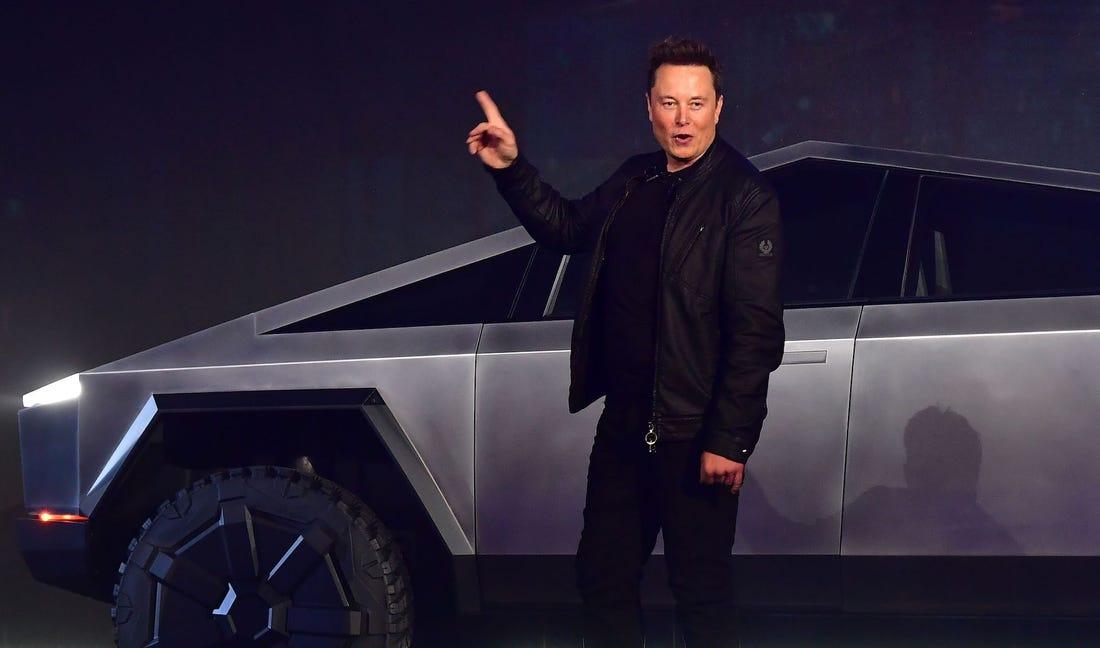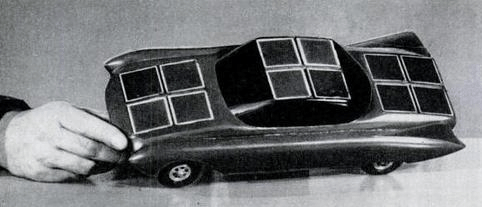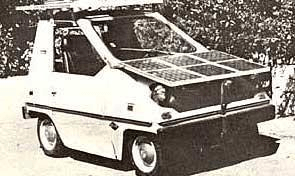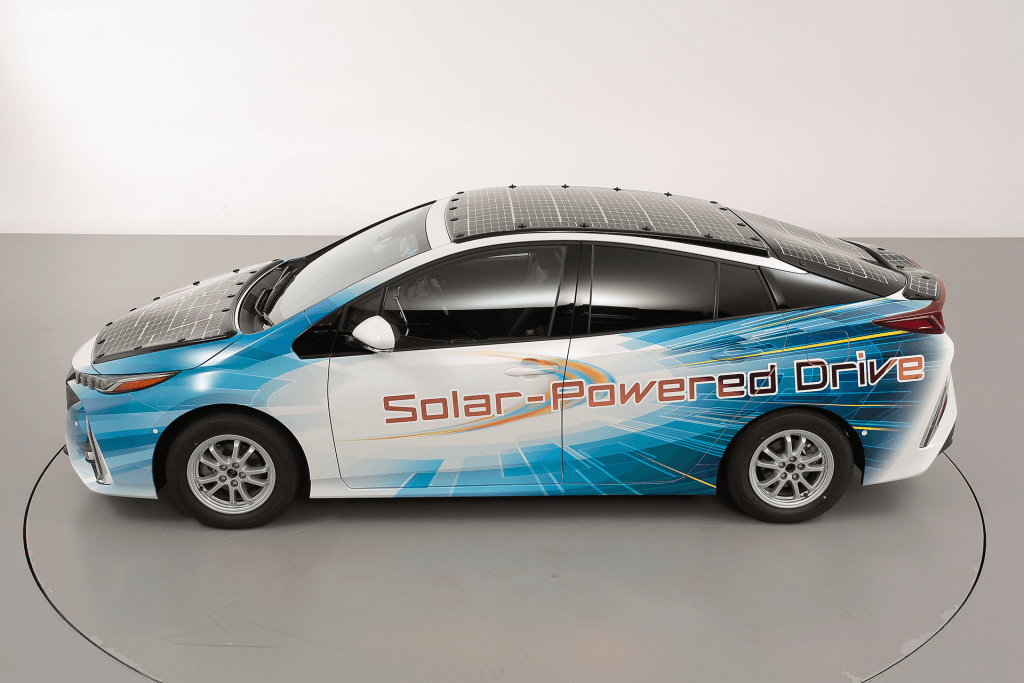The widespread adoption of autonomous vehicles into our daily lives seems like an inevitability that is just around the corner. A recent flurry of activity in the auto industry around solar-powered cars, however, has momentarily supplanted autonomous technology as the most talked about innovation in the industry, as the once fanciful idea starts to enter the mainstream.
A Brief History of Solar Cars
Despite their futuristic reputation, solar-powered cars have been around in some form or fashion for several decades. William G. Cobb of General Motors is credited with creating the first solar car back in 1955. Cobb’s invention – dubbed the “Sunmobile” was not a passenger car by any conventional measure as it was just a tiny 15-inch model car made of balsa wood and equipped with 12 selenium PV cells and a small electric motor.
The first functional solar-powered car built to-scale is thought to have been built in 1980 by a team of researchers at Tel Aviv University. Although weighing in at over 1,320 pounds, the clunky vehicle was neither functional nor visually appealing.
In this century, solar cars have mainly been associated with record-breaking speed pursuits and higher educational purposes.
The Innovators Educational Foundation (IEF) is a non-profit that has organized collegiate level solar car racing in North America since 1980. The IEF hosts two premier events annually, the American Solar Challenge and the Formula Sun Grand Prix, where teams of college students compete against each other to see who has the fastest solar-powered vehicle. The solar vehicles resemble bobsleds more than passenger cars, but they are marvels of modern engineering having the ability of reaching speeds of over 50 mph while using less power than a hair dryer.
The World Solar Challenge is a similar competition held biennially in Australia that welcomes 50+ international teams of competitors representing dozens of countries. The Ashiya University Sky Ace TIGA is the current Guinness World record holder for fastest solar-powered vehicle, achieving a top speed of 56.75 mph in Japan in 2014.
Musk Goes from Skeptic to Believer
Elon Musk once again captivated the attention of the global auto market recently in a way that only he can. No, he wasn’t launching another Tesla-made vehicle into outer space again (it’s still up there, by the way). He instead unveiled the much-anticipated Tesla Cybertruck – an all-electric battery-powered vehicle that represents Tesla’s first foray into the pickup truck market. As expected, the new-age Cybertruck comes with a number of outside-the-box features, including; an ultra-durable 30X cold-rolled stainless-steel body, armored glass windows, on-board power inverter, fully autonomous capabilities, and much more.
One of the more surprising pronouncements about the Cybertruck’s specs and capabilities came the day after the unveil when Musk revealed the following on Twitter:
Will be an option to add solar power that generates 15 miles per day, possibly more. Would love this to be self-powered. Adding fold out solar wings would generate 30 to 40 miles per day. Avg miles per day in US is 30.
— Elon Musk (@elonmusk) November 22, 2019
Musk’s embrace of solar panels on cars represents a 180 of sorts from his previous stance on the topic. He has long been skeptical about the efficacy of generating power from solar panels affixed to the roof of a car, citing surface area limitations and the amount of time that cars spend in garages and in shaded areas as primary reasons to not embrace the technology. Musk most prominently shot down the idea during the Q and A portion of his appearance at the 2017 National Governors Association summer meeting in Rhode Island:
In responding to a question from Gov. Phil Scott of Vermont, Musk stated, in part:
“Putting solar panels on the car itself…not that helpful…The least efficient place to put solar is on the car…It’s way better to put it on a roof.”
Musk also mentioned that just a year earlier he flirted with the idea of offering a solar roof as an option on the Model 3 in the form of a “retractable” deployable solar shield in order to provide the surface area necessary to generate meaningful amounts of solar energy. He asked Tesla engineers to look into it, but they ultimately came to the same conclusion – putting solar panels on vehicles wasn’t a worthwhile pursuit.
So, what changed to make Musk do an about-face on the topic? For one, solar cells continue to get more and more efficient, as we’ve noted before. Technological advancements with malleable, thin film multi-junction cells in particular have significantly advanced the reality of equipping vehicles with solar cells. Industry-leading thin film solar cells can achieve solar efficiency scores above 30%, thanks to companies like Alta Devices that have broken new ground in the quest for making thinner, lighter, more flexible solar cells that remain highly efficient.
Secondly, Musk’s embrace of solar panels on personal vehicles is likely also a response to the evolving competitive landscape. Some of the world’s biggest automobile companies are developing hybrid electric vehicles equipped with solar capabilities. A direct competitor of Tesla’s in the pickup truck sub-market – Ford – plans to release a hybrid electric version of its famed F-150 as early as next year. By equipping the Tesla Cybertruck with solar energy capturing capabilities at such an early stage, Musk is establishing a key differentiator with what is likely to be their biggest competitor before that competitor’s product has even hit the market.
Solar-Powered Cars and the Consumer Market
Rest assured that Tesla isn’t the only company planning to bring solar-powered vehicles to market. In just recent years, the consumer market for solar-powered vehicles has taken shape as iconic global brands and little-known startups alike race to perfect the technology that will bring solar-powered cars into the mainstream.
In Japan, Toyota is experimenting with a version of its Prius Prime, equipped with 860 watts worth of high efficiency thin film solar cells on the car’s hood, roof, and rear hatch. Toyota claims that the solar panels affixed to the car have an efficiency rating of 34%, providing the car with enough energy to travel 35 miles on a sunny day.
While Toyota’s Prius Prime is still undergoing testing and not quite ready for the consumer market, Hyundai released a solar-powered version of their Sonata Hybrid in August of this year. Hyundai claims that 30-60% of the car’s battery can be charged solely by solar energy, and with about six hours of charge per day from solar energy, the car can increase travel distance by about 807 miles per year.
The solar-equipped version of Hyundai’s Sonata Hybrid is available in South Korea, and the company eventually plans to enter the North American market in early 2020.
Auto giants like Toyota and Hyundai aren’t the only ones diving into the solar-powered vehicle space; the start up community is also getting in on the action.
Co-CEOs Laurin Hahn and Jona Christians founded Sono Motors in 2016 with the sole purpose of bringing a solar-powered electric vehicle to the market. That dream has been realized in the form of the Sion, the company’s lone vehicle offering that is scheduled to be introduced into the European market next year.
Unlike the aforementioned vehicles, the Sion is virtually covered in solar panels. A total of 248 solar panels cover every plausible part of the car’s body, including doors and side panels. This unique design was created so that the car could capture solar energy regardless of the sun’s angle in the sky. The company claims that the Sion can add an estimated 3,600 miles per year in driving distance from solar energy. When driven short distances – like by urban commuters – the car is completely self-sufficient.
The general lack of garages in European households and the car’s small, compact build and ridesharing capabilities make it perfectly equipped for the European lifestyle. The company is solely focused on the European market at this time for the Sion (priced at approx. $27,500) and has no current plans to introduce the car elsewhere.
If the budget-friendly Sion is the equivalent of a basic Honda Civic, then its counterpart – Lightyear One – may as well be the renewable energy version of a Rolls Royce. With an expected retail price of about $170,000, the Lightyear One is by far the most luxurious solar-powered car to soon be made available to consumers. The prototype of the vehicle was unveiled earlier this year and production is planned for 2021.
Lightyear the company is the brainchild of former University of Eindhoven (The Netherlands) engineering students who competed in the World Solar Challenge race and won in 2013, 2015, and 2017.
The sleek Lightyear One is outfitted with 54 square feet of solar panels covering its roof and hood that are able to charge the car’s battery at a rate of nearly 7.5 miles of charge per hour. The Lightyear One is equipped with batteries that will hold enough energy for up to 450 miles of driving, an impressive feat that eclipses the electric vehicle market-leading 370 miles range afforded by the Tesla Model S.
There are few industries in the world that are innovating as rapidly as the automobile and renewable energy industries. While there is reason to be skeptical about the unproven technology, solar-powered cars have the potential to make progress in combating climate change in ways that could have only been imagined decades ago. It will be interesting to see if solar-powered cars take off now that several models of solar-powered vehicles are soon to be made available on the consumer market. Regardless, the ongoing popularization of electric vehicles, hybrid vehicles, and solar-assisted vehicles in lieu of the gas guzzling automobiles of yesteryear is a development worth celebrating.









